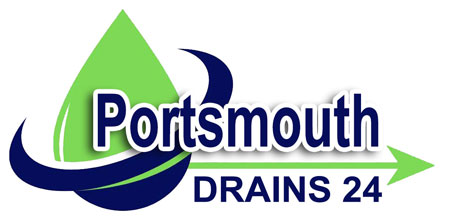As homeowners and property managers in Portsmouth seek effective solutions for maintaining their plumbing and drainage systems, Cured-in-Place Pipe (CIPP) lining has emerged as a popular method. This innovative technique offers various benefits, particularly when it comes to repairing aging pipes without extensive excavation. In this post, we’ll explore what CIPP lining is, the installation process, its advantages, disadvantages, and how it compares to traditional methods like pitch fibre repairs.
What is CIPP Lining?
CIPP lining is a trenchless technology designed to repair existing pipelines. It involves inserting a flexible resin-saturated liner into the damaged pipe, which is then cured to form a new, durable inner pipe. This method minimizes disruption and significantly reduces the time and cost associated with traditional pipe repair methods.
The Installation Process
The installation of CIPP lining typically involves several key steps:
- Inspection and Assessment: Before installing CIPP, a thorough inspection of the existing pipe is conducted, often using CCTV technology. This allows for a detailed assessment of the pipe’s condition and the extent of any damage.
- Cleaning the Pipes: Once the assessment is complete, the pipes must be cleaned to remove any debris, grease, or other blockages. This can involve methods like hydro-jetting to ensure the surfaces are smooth for the liner to adhere properly.
- Preparation of the Liner: A flexible liner made of felt or fiberglass is saturated with a resin mixture. This resin is specifically formulated to cure and harden once in place, forming a new structural lining within the existing pipe.
- Inserting the Liner: The saturated liner is then inserted into the damaged pipe using inflated air or water pressure. As the liner expands, it takes the shape of the existing pipe.
- Curing the Liner: The liner is cured using different methods, such as steam or ultraviolet light. This process solidifies the resin, effectively creating a new pipe within the old one.
- Final Inspection: After the curing process, another inspection is performed to ensure the lining has been successfully applied and that there are no remaining issues within the system.
Benefits of CIPP Lining
CIPP lining offers numerous advantages, including:
- Minimal Excavation: CIPP is a trenchless technology, meaning there is little to no digging required. This results in reduced disruption to landscapes, driveways, and roadways.
- Cost-Effective: While the initial investment may be higher than some traditional methods, CIPP can save money in the long run due to its durability and longevity, as well as reduced labor costs associated with excavation.
- Quick Installation: The installation process for CIPP is relatively quick, often completed within a day or two, reducing downtime for homeowners and businesses.
- Durability: The materials used in CIPP lining can increase the lifespan of your pipes, often lasting more than 50 years when properly installed.
- Seamless Repairs: CIPP effectively creates a new, continuous liner without joints or seams, reducing the risk of leaks in the future.
Pros and Cons Compared to Other Options
While CIPP lining has many benefits, it’s essential to consider its pros and cons in comparison to other pipe repair methods, such as pitch fibre repairs.
Pros of CIPP Lining:
- Less Disruption: Unlike traditional dig-and-replace methods, CIPP requires minimal excavation.
- Longer Lifespan: Offers a durable and long-lasting solution compared to repairing pitch fibre.
- Versatile: Suitable for a variety of pipe materials and diameters.
Cons of CIPP Lining:
- Initial Costs: The upfront cost can be higher compared to simple repairs but is balanced by long-term savings.
- Limited by Pipe Condition: If the existing pipe is severely collapsed or extremely deteriorated, CIPP may not be suitable.



Pitch Fibre Repairs
Pitch fibre pipes, commonly used in older homes, can deteriorate over time, leading to blockages and structural issues. Repairing or replacing pitch fibre can be labor-intensive, often requiring excavation. While pitch fibre repairs might be less expensive initially, they don’t offer the same longevity as CIPP lining, which can ultimately result in higher costs over time due to repeated repairs.
Conclusion
For Portsmouth residents facing drainage issues, CIPP lining presents a modern, efficient solution to maintaining healthy plumbing systems. With the advantages of minimal disruption, cost-effectiveness in the long-run, and a quick installation process, CIPP lining is a superior option for repairing aging or damaged pipes.
If you’re considering CIPP lining or need further advice on your drainage options, contact us at Southampton Drains24. Our expert team can assist you in determining the best solution for your unique needs. Let us help you maintain the integrity and functionality of your plumbing systems today!

